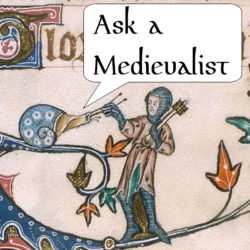Summary
The Ramayana is not the oldest story in the world, but it’s definitely in the running. Composed starting in the 700s BCE, it has been carried to all corners of the earth and translated into many languages and cultures, traveling along several distinct lines of migration, yet it remains largely unknown in the west. In honor of Em’s new novel Troth, join Em and Jesse as they discuss the story and its translations.
Notes
0/ You can get Em’s new novel here (https://books2read.com/u/mg68Xz)! Or scoop up a signed copy here (https://xanthippe42.itch.io/troth).
1/ Arsene Lupin was created by Maurice Leblanc in 1905, and The Extraordinary Adventures of Arsene Lupin, Gentleman-Burglar came out in 1910. According to my notes from the time, the actual thing I was confused by was the combination of the French “la tenure de veleurs” (a velvet wall hanging) that was adjacent to “le manteau de la cheminee” (a mantlepiece) becoming in English, “a velvet chimney-mantel,” which I don’t think is a thing.
The book also contained the observation, “La justice obéit souvent à ces entraînements de conviction qui font qu’on oblige les événements à se plier à l’explication première qu’on en a donnée.” meaning “Justice [also law officers, I guess] often obeys the training of its beliefs that one obliges the events to bend to the first explanation that one gave.” Which seems to be still true.
2/ Being so long, the text is thought to have been composed over a long period. It is thought that the earliest parts were composed no earlier than about 750 BCE, and the later parts could have been written as recently as the 3rd century CE.
3/ Some non-academic sources of info about partition: Ms. Marvel (Disney+ show, episode 5), Dr. Who (Series 11, episode 6), Midnight’s Children by Salman Rushdie.
4/ For more on the “300 Ramayanas” controversy, see “Censoring the Ramayana,” Vinay Dharwadker, PMLA 127.3 (May 2012), pp. 433–450. https://doi.org/10.1632/pmla.2012.127.3.433
5/ Earliest manuscript: 6th century BCE (See this article.) Prior to its discovery in 2015, the earliest manuscript was assumed to be from the 4th century BCE, attributed to Valmiki (the putative author of the Ramayana).
6/ Valmiki: the traditional author of the Ramayana. https://en.wikipedia.org/wiki/Valmiki
7/ A summary of the story: https://en.wikipedia.org/wiki/Ramayana#Synopsis
8/ Shakuntala: episode 15
9/ The quote Dr. Jesse reads is from “Three Hundred Ramayanas: Five Examples and Three Thoughts on Translation” in The Collected Essays of A.K. Ramanujan (131–160). (Jesse is paraphrasing p. 134.)
10/ Silk Road, if you missed it, was episode 83 “Old Silk Road, Take Me Home.”
11/ Kannada is a Dravidian language spoken in southwestern India.
12/ The Chakri dynasty: https://en.wikipedia.org/wiki/Chakri_dynasty
13/ The Ramakien: https://en.wikipedia.org/wiki/Ramakien
14/ The Ramayana of Valmiki: The Complete English Translation, edited and translated by Robert P. Goldman and Sally J. Sutherland Goldman. Princeton Library of Asian Translations. Princeton University Press, 2021.
15/ The proto-Indo European root for “cat” is maybe *kat-, but the reason all the European words look similar is because they come from the Latin “cattus.” In fact, one etymology blog (https://www.etymologynerd.com/blog/cats-and-kittens) suggests that because the animal was traded a lot, it’s hard to get back beyond a certain point because everyone’s word was the same.
Interestingly, the word “textile” (from the Latin “texere”) and the word “technology” (from Greek “tekhne”) both share the same PIE root: *teks-.
16/ Brief Gilgamesh digression: Utnapishtim is in the section of Gilgamesh where the big G is searching for the key to immortality after Enkidu dies, but the reasons why the flood (which he tells G about) actually happened are kind of opaque. Utnapishtim survived because one of the gods (Ea) leaked the plan to U and told him what to do.
Podcast: Play in new window | Download

